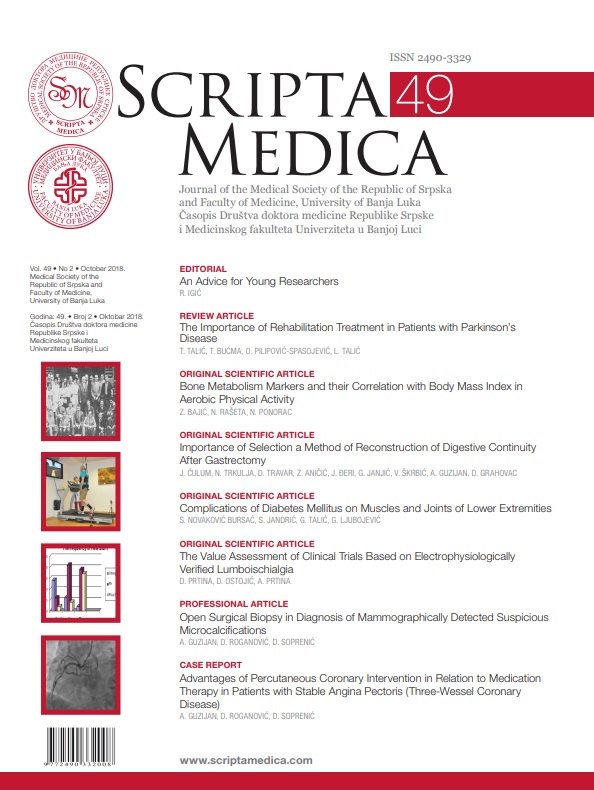The Value Assessment of Clinical Trials Based on Electrophysiologically Verified Lumboischialgia
DOI:
https://doi.org/10.7251/SCMED1802112PAbstract
Introduction: Lumboischialgia is defined as pain in the distribution of ischemic nerve caused by a pathological change in the nerve itself, whereas lumbago is a localized spondylogenic pain that is not followed by a neurological deficit, and is a consequence of muscular bone dysfunction of the lumbosacral region. Previous studies which investigated the value of clinical trials in the diagnosis of lumboischialgia did not find a high sensitivity and specificity in those tests.
Objective: Our objective was to define clinical tests that indicate the existence of radiculopathy and to determine the value of the overall diagnostic finding in relation to the findings of the EMNG examination.
Methods: The sample consisted of 100 patients of both genders, aged 18-65. The inclusive criteria were: strong lower back pain propagating in one of both legs and lasting for 1-3 months and the medical history suggesting a radicula lesion. Non-inclusion criteria were the following: symptoms of cauda equine, acute febrile condition, existence of tumors, vertebral fractures, lesions of central motoneuron, inability to perform the EMNG examination, acute psychotic conditions, operations of the spine and pregnancy. Immediately before each EMNG examination, medical history was taken with defined questions on the existence of pain stronger in the leg than in the spine, dermatome deficit, pain during labor and weakness in the leg.
Results: Patients usually have a total of two (31%) and three (26%) positive clinical signs of lumboischialgia. By statistical analysis, three clinical trials proved to be discriminatory in terms of verification of radiculopathy: positive Lazarevic test, paresis of a particular muscle group, and absence or reduction of the patellar or Achilles reflex. After processing with logistic regression, the statistically predictive value is retained by a positive Lazarevic test. The analysis of the surface under ROC curve shows that the positivity of four or more clinical tests is statistically the best limit value, with a specificity of 67% and a sensitivity of 56%.
Conclusion: The conducted study indicates the statistical significance of the frequency of positive clinical trials: Lazarevic test, objective muscular weakness and absent reflex, in persons with electrophysiologically verified lumboischialgia.

